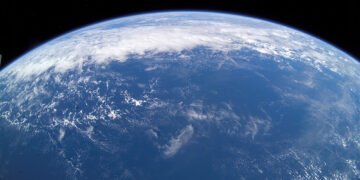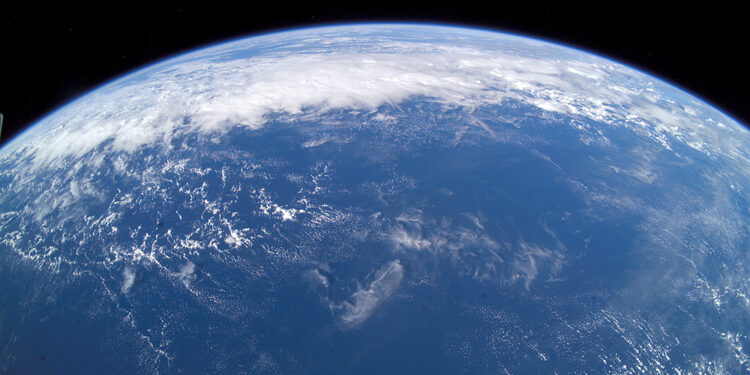When we think of water on planets, vast oceans, flowing rivers, and serene lakes often come to mind. This imagery has shaped our understanding of water distribution in planetary bodies for decades, let’s discuss how recent discoveries are changing this view.
The Complex Water Distribution Inside Planets
For years, scientists have used Earth as a model for understanding other rocky planets. Earth’s water is mostly visible on the surface—oceans, lakes, rivers, and glaciers—but recent studies suggest that this is only the tip of the iceberg. Researchers from ETH Zurich and Princeton University, led by Professor Caroline Dorn, have developed new models using computer simulations to explore how water behaves under extreme conditions, particularly in young, hot planets with molten magma oceans. These simulations have shown that water can dissolve exceptionally well in magma oceans, where it mixes with iron and other elements, eventually sinking with iron droplets toward the planet’s core as the planet cools and forms layers .
This process indicates that a significant portion of a planet’s water may be trapped in its core, never to be seen on the surface. For instance, recent research suggests that Earth’s interior may contain up to 80 times more water than all the surface oceans combined.
Why This Matters: The Science Behind Water-Rich Cores
Understanding how water is distributed within planets is crucial for grasping how they form, evolve, and potentially sustain life. When planets form from the accumulation of material in their early days, they are extremely hot, often covered by oceans of molten magma. Water present on the molten surface dissolves into this magma. As the planet cools, heavy materials like iron sink to form the core, carrying water with them. This process means that a significant portion of a planet’s water can become permanently trapped in the core, altering our perceptions of water availability on planets .
For larger planets, such as super-Earths, with more mass, the internal pressures are even higher. These intense pressures force more water to combine with iron droplets, effectively pulling it into the deep interior. Under such extreme conditions, water does not exist in its typical H2O form but rather as separate hydrogen and oxygen atoms. This finding suggests that the earlier notion of water-rich planets being “ocean worlds” may be too simplistic. Instead, these planets could have deep, inaccessible water reservoirs within them that play a pivotal role in their evolution .
Implications for the Search for Habitable Exoplanets
This new understanding of water distribution significantly impacts the search for habitable worlds beyond Earth. Water is considered a key ingredient for life, and scientists have long speculated about the potential habitability of water-abundant exoplanets. Traditionally, it was believed that these planets, covered by deep global oceans, might be ideal candidates for supporting life. However, recent studies suggest otherwise. For life to thrive, the exchange of vital nutrients between the ocean and the planet’s mantle is essential. In worlds where water is locked away deep in the core, such exchanges are less likely to occur, potentially reducing the habitability of these planets .
However, there is still hope. Even if water is hidden deep within a planet’s core, some of it can de-gas and rise to the surface as the planet cools and forms a solid mantle. This process could release water vapor into the atmosphere, potentially creating a habitable environment. If we detect water vapor in an exoplanet’s atmosphere, it could indicate a much larger reservoir of water within its interior, which could be a game-changer in our search for life.
The recent studies on exoplanets like TOI-270d and K2-18b highlight this potential. Observations suggest that these planets have interactions between their molten interiors and their atmospheres, indicating hidden water that could affect atmospheric composition and conditions for life. This makes them prime candidates for further investigation .
Future Exploration: The Role of Advanced Telescopes
The discovery that planets may contain more water than previously thought revolutionizes how we interpret astronomical data. Advanced instruments like the James Webb Space Telescope (JWST) play a crucial role in this new era of exploration. JWST allows astronomers to analyze the composition of exoplanet atmospheres by detecting water vapor and other molecules. For instance, exoplanet TOI-270d, a super-Earth, has shown evidence of interactions between its magma ocean and atmosphere, suggesting significant water content hidden below its surface. Similarly, K2-18b, another promising candidate, may also have a substantial water reservoir influencing its atmosphere (ETH Zurich).
By understanding these hidden water reservoirs, scientists can better identify which planets are worth exploring further for signs of life. These telescopic observations help bridge the gap between what we see in exoplanet atmospheres and the hidden dynamics within their interiors. With this knowledge, we can better pinpoint the exoplanets that might have the conditions needed to support life, guiding future exploration missions.
What This Means for Planetary Science and Habitability Studies
The realization that planets may harbor vast amounts of water within their cores rather than on their surfaces fundamentally shifts the criteria for assessing exoplanet habitability. Planets previously thought to be dry or barren might, in fact, have the potential to harbor life beneath their surfaces. Conversely, planets with abundant surface water might not be as habitable as once thought due to a lack of nutrient cycles essential for sustaining life.
This research, therefore, pushes us to think more creatively about where we look for life beyond Earth. While ocean worlds were once considered the primary targets, we must now consider planets that may have their water locked away beneath the surface but still accessible enough to impact atmospheric composition. The tools and insights provided by modern telescopes like JWST will be pivotal in guiding this exploration.
Moreover, understanding the distribution of water within planets gives us insights into their geological and atmospheric evolution over billions of years. It helps us learn more about how planets develop magnetic fields, tectonic activity, and other critical processes that may affect habitability. The potential discovery of deep water on exoplanets could even lead to new models for Earth’s own formation and water distribution, offering a more comprehensive picture of our solar system’s history.
Reference:
Luo, H., Dorn, C., & Deng, J. (2024). The interior as the dominant water reservoir in super-Earths and sub-Neptunes. Nature Astronomy. https://www.nature.com/articles/s41550-024-02347-z



















